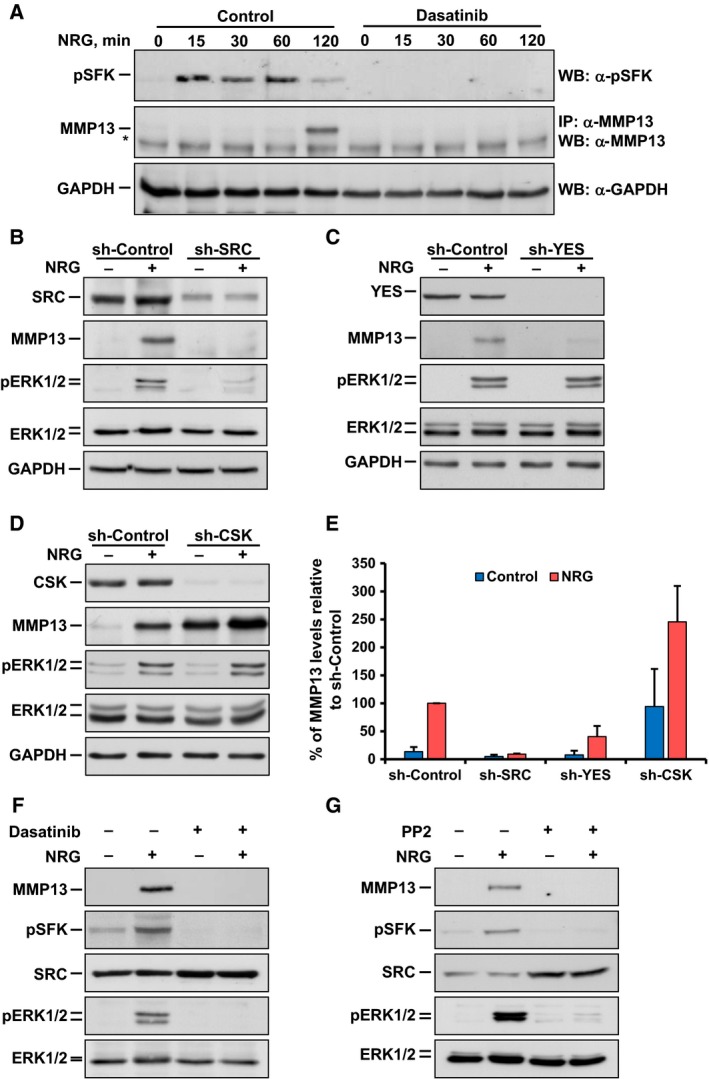Figure 4.

Participation of SRC family kinases in NRG‐induced MMP13 upregulation. (A) Time course of the effect of dasatinib on SRC family kinases (SFKs) phosphorylation after NRG stimulation in MCF7 cells analyzed by western blotting. In addition, the effect of dasatinib on NRG‐induced MMP13 upregulation was analyzed. The asterisk indicates the heavy chain band of the antibody used for MMP13 immunoprecipitation. Levels of GAPDH were used as a loading control. (B–D), Western blotting analysis of the effect of the knockdown of SRC (B), YES (C), and CSK (D) on the regulation of MMP13 and pERK1/2 after NRG stimulation (15 min for pERK1/2 and ERK1/2 or 4 h for MMP13) in MCF7 cells. Cells were infected with lentivirus containing the shRNA control (sh‐Control) or the shRNA sequence targeting SRC, YES, or CSK. To verify the knockdown efficiency, target protein levels were analyzed. GAPDH levels were used as a loading control. (E) Bar graph representing the quantification of the effect of the knockdown of SRC, YES, and CSK on MMP13 protein levels in NRG‐stimulated MCF7 cells. Data were relativized to those levels in NRG‐stimulated cells infected with sh‐Control and are expressed as the mean ± SD of two independent experiments performed as in (B–D). (F, G) Analysis of the comparative effect of 1 μm dasatinib and 10 μm PP2 on the regulation of MMP13, pSFKs, and pERK1/2 after NRG stimulation (15 min for pSFKs, pERK1/2 or 4 h for MMP13) in MCF7 cells by western blotting. Levels of ERK1/2 were used as a loading control. Data information: Experiments were repeated twice with similar results. Representative results of all the findings are shown.
